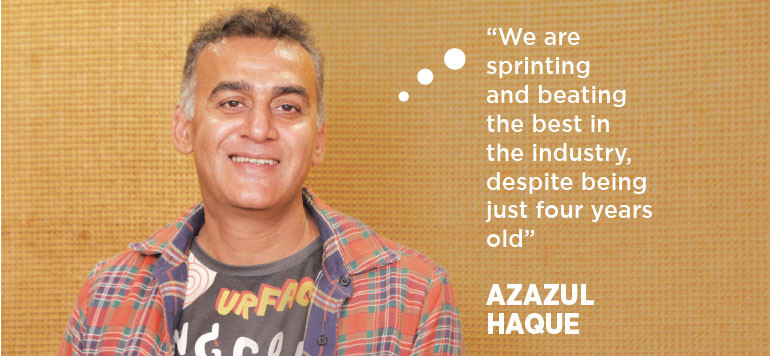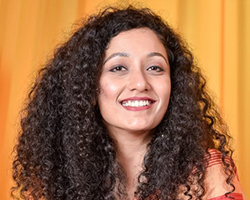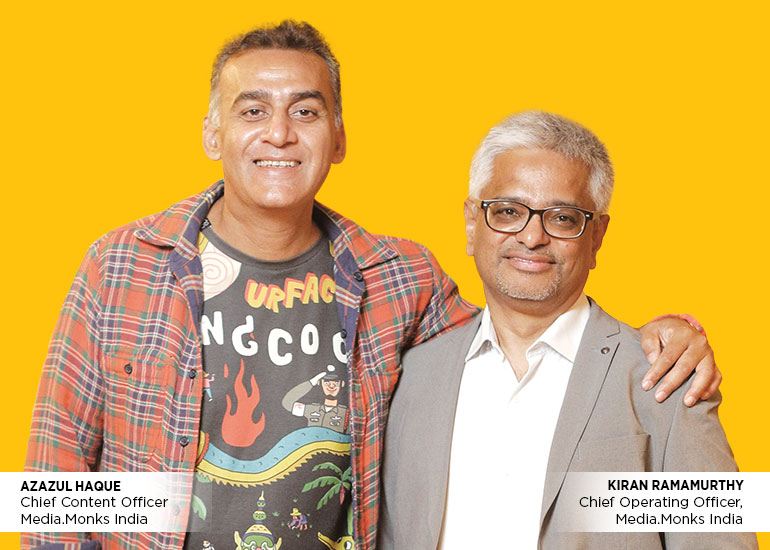They have not really followed the rulebook for agencies to a T. While most agencies in India started out by placing their bets on brand communication and conceptualization before trying their hand at production or execution; and relying largely on retained accounts for revenue over projects at the outset, Media.Monks chose to invert the game, slowly reaching out to cover all bases in the value chain of advertising, but from the opposite end of the spectrum. And it is a strategy that seems to have worked for the company because today they have clocked more than Rs 100cr in revenue in less than four years of the agency’s inception in India.
After formally establishing itself in the Indian market around early 2020, the company got a revamped name in Media.Monks which became the unitary brand of Sir Martin Sorrell’s S4 Capital, post the merger of Media Monks and MightyHive in 2021. Working as a single P&L company across 57 locations in 32 countries today, has not deterred Media.Monks India from developing a signature of its own. Despite starting out as a content factory cum production house, Media.Monks India today has around 60% of its revenue coming from agency business and only 20% from production. Almost 35% of the billings have moved towards retained business as opposed to project-based ones, and the objective is to further grow this number to 50-60%.
In this conversation Azazul Haque, Chief Content Officer, Media.Monks and Kiran Ramamurthy, Chief Operating Officer, Media.Monks, the proud writers of this success story, tell us that around 80% of the business in India is courtesy the ‘Local Heroes’ or local businesses. And yet, India acts as a development and deployment centre for some of the company’s most prestigious global clients such as Google and BMW. The India repertoire, specifically, has reputed names like ONDC, Xiaomi, HP, Tata Tea, Bajaj, Amazon and Booking.com, to name a few. With the arsenal fully loaded, Ramamurthy is hopeful that in a few years from now Media.Monks India’s contribution to the global company revenue will be a significant number. Haque adds that at a time when classical advertising has taken a backseat, Media.Monks India’s ‘tech meets creativity’ or ‘ideas meet execution’ DNA will spell advantage for it.

Q] A creative agency, production house, digital agency, or content factory, what exactly is Media.Monks?
Azazul: Media.Monks is the need of the hour. Most brands today need a singular unit which can give them all possible outputs, no matter what the medium or format is. An agency should be able to deliver all of it and yet maintain uniformity in the brand’s voice, and that’s what we do. If a brand wants us to make a TVC for them, we can. For the same brand we can also create ‘always on’ content, and/or do something which is Digital or tech-first. We are equipped to deliver while maintaining that uniformity, whatever the requirement, the format, or the medium may be. In a nutshell, we are the future of advertising.
Kiran: The classical problem is that branding agencies are not able to manage Digital, and Digital agencies don’t understand the brand which leads to the brand voice getting compromised. Now, take that problem and compound it because your brand experiences, i.e. your website or gamification or Digital avatars, don’t talk to each other, it would be impossible to keep the brand at the centre and still have an ecosystem that delivers a particular brand voice. We fill this gap, because we understand the brand. We are not starting the conversation by telling you that we have an AI or Metaverse solution or a TVC for you. We are saying that we need to understand the brand and the business problem and we will solve it because we have an ecosystem that can find a solution depending on what the brand needs. That’s how we approach clients.

Q] The essence of Media.Monks under S4 Capital was that of a retainer production house & yet you are a full-fledged agency today in India. Did the concept of an agency that only executes & doesn’t conceptualise, not work initially considering that there is a give-and-take relationship between the creative agency and the production house in India. You as a production house tried to build relationships directly with brands, did your model ruffle feathers?
Kiran: We had to start from somewhere, and so we decided to merge with a digital content studio called White Balance. It was a small setup of 30 people. Because their antecedent was production, we started with building the execution capabilities, even though we knew then that we had to slowly build the complete value chain of the communication ecosystem, and we did that eventually. But because we started with execution capabilities, we were able to do what most agencies generally struggle to do, which is to connect the thought process with the final execution. We were a different model and were recognised as being different. Other than that, we are an ecosystem and we have many good friends in the industry.
Azazul: We didn’t ruffle feathers, but surely, we were the awakening for many agencies who were in a slumber, not ready to accept the changing era. We did shake them up for their own good by showcasing or embodying that change and making a lot of people somewhat uncomfortable with the realisation that there can be one marketing consultancy which can deliver everything, right from the conception of an idea to the execution of it; something they were not equipped to do. Post that, I’ve seen most of the agencies across networks trying to adopt this model.

Q] Azazul, did you join the agency well after it had pivoted to provide the complete range of services in the communication value chain?
Azazul: Kiran and Poran Malani were clear about the future of Media.Monks in India, as an organisation that does a lot of brand thinking. It took them a year to get me on board as a CCO because I kept thinking of Media.Monks as a production-first agency then, and wondered what I would do there. Strangely, I was at their Christmas Party where I met John - the tech head. With every mobile screen having a camera today, I asked him if a customer can become the protagonist in an ad. His answer was ‘yes, it can be done’. It was the perfect example of ‘idea meets execution’, and Media.Monks had some outstanding execution capabilities. I thought to myself that if I have an idea which is trying to engage consumers beyond one-way content, then Media.Monks was the only place to be in.

Q] S4 Capital was considered a big threat to WPP. But how difficult was it in reality to get big clients onboard & change their loyalties?
Kiran: We started the journey in January 2020, so it was difficult in the initial years because of the pandemic and yet great because at that point clients realised that they had to think of alternate ways to reach consumers. We brought to the table things like Digital experiences and virtual production technology. One of our biggest clients back then was an Edtech company for whom we produced 1000-plus videos in the middle of the pandemic. That’s how we made inroads into the business.
What helped us gain the confidence of clients is our DNA of experimentation and putting out proof of concepts. In India, we are perhaps the first to dabble in what’s called the ‘Unreal Engine’ which is used in gaming and now in production as well. We started putting out proofs of concept and showing our clients what is possible technologically. We had something called the ‘car replacement technology’ which is when you shoot with a certain car and replace it with another one in the ad. Even the premium studios struggled to do this, but we could. From Unreal Engine, we got into virtual production that allows you to be in New Delhi and shoot an ad in the middle of Champs-Élysées. We invest a lot of time in developing a particular technology.

Q] You recently did some ads with Amazon and won the Tata Tea digital mandate. What does your roster of clients look like?
Kiran: We’ve been working across multiple categories in the technology space – HP, Xiaomi, Poco, Adobe, and another big technology company that we should be able to announce shortly. In FMCG, we have Tata Tea and have worked with Britannia and Mondelez, Amazon is a large client for us in the e-commerce space while we have also worked with a lot of startups in the fin-tech, ed-tech, and health-tech sectors. Booking.com is one of our clients and we have been working with Bajaj for a long time, and now we are the Digital AoR for one of their portfolio brands. We are doing the rebranding exercise for the Worldwide Federation of Direct Sellers Association, WFDSA. There’s a U.N.-affiliated company that we are working for in the agriculture and sustainability space. Additionally, we work with a lot of big global companies like Google, Facebook and BMW that are handled out of our international offices, but we use India as a development and deployment centre for them. So, a lot of work for Google, BMW, etc., happens out here. It’s a long list.

Q] Azazul, interestingly you also directed an ad for Tata Tea recently, which was conceptualized by Mullen Lintas. How often does it happen that one ad agency is managing direction for the ad conceptualised by another agency?
Azazul: I would say that it’s the new era of collaboration where the boundaries are blurring, or rather, that they should blur. Tata Tea is our client too and whether it’s us or Mullen Lintas, we both are thinking about what’s good for the brand, instead of thinking about the competition. So, Mullen Lintas cracked the idea for this campaign. They wrote the script and asked me if I could direct the film. It was an honour for me because this was happening for the first time in the history of advertising that the head of an agency wanted another agency head to direct the script they had written.

Q] Is most of your business project-based or on retainer?
Kiran: When we started, it was project-based because we were entering in the middle of the value chain. Later, we started to go towards the top end and have come to a point right now where 35% of our business has moved towards retainer or what we call ‘retainer by nature’ businesses. Our objective is to take it up to 50-60%, which is somewhat strange because agencies that have been on retainer businesses started with 100 percent and then started sliding. For us, it was the other way around, but I am happy to report that we are making good progress in achieving the right balance there.

Q] A lot of agencies are under major margin pressure right now. Considering that you have a different model, tell us where the bulk of your revenue is coming from?
Kiran: If I were to give you the top line, today, almost 60% of our revenue comes from the top end of the value chain, and only 20% is coming from the lower end, i.e. production. The rest of the 20% is from somewhere in between. So, it is top-loaded; the brand conversations dominate. Just three years ago, it was the other way around. Today, fortunately, because we have evolved in a particular manner, the bulk of our revenue comes from brand thinking.

Q] Your revenue grew four times between 2021 and 2022. How was 2023 for you?
Kiran: We’ve had a CAGR of around 72% from the time we started out. When you have had such a high growth rate, you know it’s not going to sustain. There will come a point in time when it will begin to peter out. 2023 is where we are expecting moderate growth, in the high single digit, and it is slightly better than the performance of the overall industry. It is consistent with what we aimed for so we are happy with where we are. As we start offering more services, I’m confident that the growth will become more robust.

Q] You are a four-year-old company which has clocked Rs 100cr. plus revenue. Several network agencies are struggling to achieve that goal in India. How much do you contribute to the global revenue of Media.Monks?
Kiran: Yes, we are a Rs 100cr. plus agency. Generally, we don’t talk about country revenues because we are a unitary P & L. Without delving too much into it, what I can tell you is that it’s not a significant number from a global standpoint. But in the course of our evolution, probably in the next two to three years, we will be quite a significant part of our global revenue mix.
Q] S4 Capital’s revenue has fallen by 15.4% in the third quarter of 2023. Have you managed to insulate yourself from that and in what way?
Kiran: Globally, we expect Q4 to be much stronger. I don’t think there is necessarily a connection between how we are doing globally and in India, not by design. But the local companies whom we call the ‘local heroes’ constitute the bulk of our business, around 80%. Our clients are not necessarily the global ones.

Q] What’s your priority going to be in 2024?
Azazul: Media.Monks is akin to a toddler in the industry, but we don’t just want to take baby steps. We had the ambition of running, instead we are sprinting and beating the ones that are best in the industry. We have done outstanding work like the Tata Tea campaign for Lohri or that on 26th January where we did a virtual parade and went hyper-local. The task for us is ‘How do we make technology reach an auto-rickshaw driver in a small town?’ Because he is also using tech now. We want to do more of such work where we massify content using technology. Classical advertising, which is the TVC, has been the biggest in India so far, but we believe that it is not sustainable. People don’t just watch now; they want to create too. There are millions of creators in India. How do we get them to create an ad instead of making them watch one? That’s the arena we will be entering in 2024.
So, next year it’s not just going to be about designing the future of Media.Monks, but also designing the future of what advertising should be in India. The creative challenges are going to be a lot more, because we have all been trained in a certain way. I have spent 20 years just writing and making TVCs. The challenge now is to create content for this new era of communication. That’s something we’ll have to figure out and deliver.























